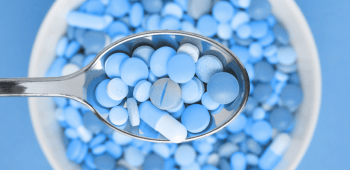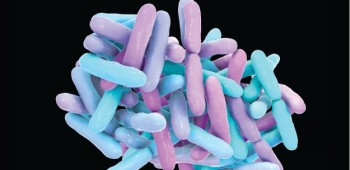Probiotics: what exactly are we talking about?
From the Latin pro and Greek bios meaning “for life”, the term “probiotic” was suggested over 60 years ago, as opposed to “antibiotic” 1. Probiotics generate great interest among researchers, clinicians, and patients because of their benefits on the homeostasis of the microbiota and the host’s health. Although well-defined and classified, probiotics still hold some secrets. Clarifications.
Sources
This article is based on scientific information
Sections
About this article
Table of contents
Table of contents
Definition of probiotics and a brief modern history
Probiotics are “live microorganisms which when administered in adequate amounts confer a health benefit on the host”. The first definition by the Food and Agriculture Organization (FAO) and the World Health Organization (WHO) in 2002 2 was slightly rewritten by a consensus of experts in 2014 3.
Since time immemorial, nutritional and therapeutic advantages have been attributed to fermented foods. But it was only from 1906, following Louis Pasteur’s work, that the effects of microorganisms on health, linked to lactic fermentation, were scientifically explored 4. Consequently, the Russian Elie Metchnikoff associated the longevity of rural Bulgarians with the regular consumption of fermented milk with Bacillus bulgaricus 5 . When the pediatrician Henri Tissier observed the paucity of “bifidus” bacteria in the diarrhea of children, he suggested that these bacteria could restore their intestinal flora 6 . The probiotics “boom” in science started at the end of the 1980s 7 , with the advent of molecular biology. Vitally important progress has since been made in the characterization of probiotic microorganisms and the demonstration of their health benefits 8 9 .
Microbiota, probiotics, microbiome: so similar yet so different
Microbiota describes all the microorganisms living in a particular environment 6. The human body houses the gut microbiota, which contains 1012 to 1014 microorganisms 7 , but also the skin, vaginal, oral, nasopharyngeal, and pulmonary microbiota 7,8 . Although some of the microorganisms in the gut microbiota are a source of potential probiotics 5 , they cannot be called “probiotics” before having been isolated and characterized, and their effect on health has been clinically demonstrated 3.
The terms “microbiota” and “microbiome” are often used interchangeably, but they are not synonyms. Microbiota describes the different microorganisms present in the medium studied from a taxonomic point of view: genera, species, etc., whereas microbiome refers to the genome of these microorganisms 6 , and other internal or external structural elements, such as RNA, signal molecules, the environment, etc. with the aim of better understanding their activity and functions 9 .
Zooming in on microorganisms: what are probiotics?
As a reminder, microorganisms are living beings that are invisible to the naked eye and include the following 10:
- All prokaryote unicellular organisms (a single cell without a nucleus): These include bacteria, of which numerous species live in all environments, including the human body10,11, but also Archaea, which resist in extreme conditions and are thought to be the first forms of life on earth 12,13.
- Certain eukaryote uni- or multicellular microorganisms (one or more cells with a nucleus): These comprise microscopic fungi, including yeasts and molds14 , but also microalgae and protozoa15,16 .
- Viruses: Whether they belong to the world of the living is still under debate: they are not cells and they can only replicate in a host cell 10,17 .
The microorganisms most commonly used as probiotics are :
- Lactic bacteria, include the genera Lactobacillus and Bifidobacterium as well as Lactococcus, Streptococcus and Enterococcus 5,18 .
- More rarely, other bacteria, such as Clostridium and Escherichia Coli 19.
- Yeasts, such as Saccharomyces boulardii, isolated from the skin of lychees and mangosteens 20 , or even Kluyveromyces 21 .
Probiotics are classified by genus, species (sometimes also sub-species) and their strain number according to international nomenclature 22 . For example: Lactobacillus (genus) casei (species), then a series of numbers and/or letters (strain). A strain is differentiated from other microorganisms of the same species because it is genetically unique and has specific physiological properties 18.
Definition of probiotic: beware of confusion
The term probiotic is often misused. Certain products, such as shampoos, disinfectants, or aftershaves, do so without meeting the required criteria in terms of efficacy and viability 3.
Fermented foods are “produced with a microbial growth and desirable enzymatic conversion of food components”. Some fermented foods, such as yogurts, contain living microorganisms, but these must have demonstrable nutritional benefits beyond the food matrix to be classified as probiotics 23 .
Prebiotics are substrates, mainly of food fibers, (fructo-oligosaccharides, inulin, etc.), used by the microorganisms of a microbiota and favor their growth, thereby conferring a benefit on the host 24,25 . Products that contain both pre- and probiotics are called symbiotics 24.
Fecal microbiota transplantation (FMT) consists in inserting a healthy donor’s stools into the receiving patient’s gastrointestinal tract with the aim of treating diseases associated with dysbiosis. As the microorganisms transplanted as a whole have not been identified, FMT preparation does not fall within the scope of probiotics 3. To date, it is only indicated for the treatment of relapsing C. difficile infections 26.
Xpeer course: The rationale behind why and how to choose a probiotic
Health benefits of probiotics
The efficacy of specific strains of probiotics has been clinically demonstrated for different indications.
prevention of antibiotic-associated diarrhea (AAD) in children 27, C. difficile diarrhea 28 , acute gastroenteritis in children 29 , functional bowel problems 30 , lactose intolerance 31 , chronic inflammatory bowel diseases (IBDS) 32 , prevention of necrotizing enterocolitis in premature infants 33 , H. pylori infection 34 , infections and diarrhea associated with parenteral nutrition 35, prevention of traveler’s diarrhea 36, etc.
Winter respiratory tract infections 37, relapsing urinary tract infections 38, gynecological infections 39, atopic dermatitis in children 40, food allergies 41 etc.
namely the influence of probiotics on hypercholesterolemia 42, colorectal cancer 43 , or certain neuropsychiatric disorders 44.
A mode of action for each strain
A probiotic exerts a beneficial effect on the microbiota by maintaining the equilibrium, favoring its reconstruction during and after an episode of dysbiosis or preventing certain clinical situations that disrupt the microbial ecosystem 45 . The mode of action is strain-dependent, and cannot be extrapolated to the species or the genus 46 .
Each probiotic acts according to its own physiological properties and/or on 46,47 :
by modulating the immune system, exerting an anti-inflammatory action, a trophic effect on tissues, stimulating the enzymatic load and/or reinforcing the barrier effect against pathogens ;
by releasing antimicrobial molecules against fungi, bacteria, or viruses ;
by neutralizing pathogenic toxins.
Learned societies, such as the World Gastroenterology Organisation (WGO), the European Society for Paediatric Gastroenterology Hepatology and Nutrition (ESPGHAN), and the International Scientific Association of Probiotics and Prebiotics (ISAPP) regularly issue opinions and recommendations on the use of probiotics.
It can only be called a probiotic if it satisfies four important conditions
Four criteria based on the WHO/FAO definition 2make it possible to determine whether microorganisms can be classified as probiotics 22,47:
- Sufficient characterization (genus, species, and strain) by phenotyping and genetic tests. Nowadays, genomic sequencing of the strain is also recommended, mainly for assessing safety;
- No toxicity for the intended use, such as production of a toxin, hemolytic potential, or infectivity in animal models;
- Positive action on humans, backed by at least one clinical trial in humans, conducted in accordance with accepted scientific standards or the recommendations and guidelines from health authorities;
- Living organism in the product and at an effective dose for the entire duration of its shelf-life.
See the other pages in our series dedicated to probiotics
How do you choose a probiotic for your patient?
Everything you need to know about probiotics
BMI-21.24
7 Site Web Inserm : Microbiote intestinal (flore intestinale) (MAJ 01/02/16, accédé le 06/06/21).
8 Beck JM, Young VB, Huffnagle GB. The microbiome of the lung. Transl Res. 2012;160(4):258-266.
11 Site Web Microbiology Society : Bacteria (accédé le 05/06/21).
12 Site Web Microbiology Society : Archaea (accédé le 05/06/21).
14 Site Web Microbiology Society : Fungi (accédé le 05/06/21).
15 Site Web Microbiology Society : Algae (accédé le 05/06/21).
16 Site Web Microbiology Society : Protozoa (accédé le 05/06/21).
17 Site Web Microbiology Society : Viruses (accédé le 05/06/21).
26 Zallot, Camille : Transplantation de microbiote fécal et pathologies digestives, La Lettre de l'Hépato-gastroentérologue, Vol. XXI -n° 1, janvier-février 2018.
46 Williams NT. Probiotics. Am J Health Syst Pharm. 2010;67(6):449-458.














